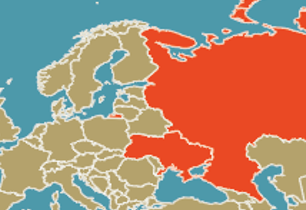- On February 21, Putin announced that Moscow would recognize the Donetsk and Luhansk People’s Republics in eastern Ukraine and sent Russian “peacekeeping troops” into the region.
- Initially, the U.S. announced sanctions on only the breakaway regions, but on February 22, a Russian focused “first tranche” set of sanctions was announced targeting two sizable Russian financial institutions, Russian sovereign debt, and Russian elites (and their families).
- The UK, Japan, and Australia announced that they would levy sanctions against Russia, and Germany announced that it will not grant the final approvals for the Nord Stream 2 pipeline.
- Last night, Putin announced that Russia has commenced a “special military operation” in Ukraine – effectively a full-scale invasion on multiple fronts.
- Putin said that the intent of the operation was to protect Russians living in the Donbas and that Russia did not intend to occupy Ukraine and demanded Ukraine’s military “lay down their arms.”
- While the initial targets have been Ukrainian air defense systems, communications, and government installations, there have been reports of shelling and rocket attacks on several major cities including Kyiv.
- Initial reports from Ukraine’s government said that 40 Ukrainian soldiers were killed and dozens were wounded, while Russia announced that they had destroyed 70 military targets in Ukraine, including 11 airfields, three command posts, and a naval base.
Why it Matters:
Are sanctions effective? The concern is that Russia has been preparing for organized sanctions for some time (Russia’s debt to GDP ratio is only 17.88%, it has a current account surplus of $19 billion, and a reserve account of over $630 billion to absorb the impacts of these sanctions). Another mitigating factor is the growing (informal) alliance with China, which signed a 30-year energy deal with Russia earlier this month and has refused to condemn any Russian military aggression in Ukraine. Our team is concerned that the reality is this situation goes well beyond Ukraine and could be just the beginning of an effort by Putin to “avenge” the fall of the Soviet Union and begin to expand Russia’s sphere of influence, countering NATO. The question is where does Putin go from here and what measures are available to be deployed as an effective deterrent?
“I believe that we are witnessing a “coup de main” attempt by Russia to incapacitate and neutralize the Ukrainian military thereby causing a government collapse. Change of government is the strategic objective. The Russian force structure seems sufficient to attempt this high-risk effort to push the government out of Kyiv and install interim Russian supporting leadership. Next, the Russian forces will consolidate and protect the new government breaking the will of the Ukrainian people and their support of the current government. Putin and the Russian military have to do this fast to achieve total overthrow. If not, this can turn into a protracted effort which would lead him to then go back to diplomacy and negotiate a favorable buffer zone. He wins either way as NATO and the world will want to negotiate a cease fire along the line of contact which Russia will then never relinquish and pull that portion of Ukraine into Russia proper.
The U.S. and NATO will likely move troops to more defensive postures with deployment of forces to eastern NATO countries. This will cost money and is a way Putin, in some measure, puts a cost on us and others. I suspect you will see Russia probe with naval and strategic air platforms to intimidate the west.
This is a very bold effort by Putin.” – General Frank Kearney


